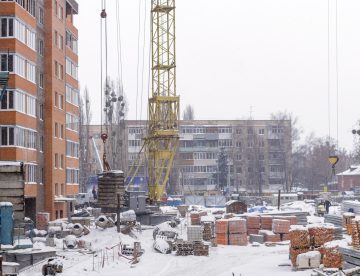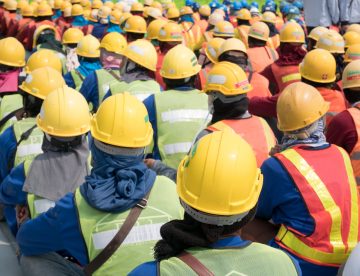
The recent cold snap is a reminder to us that working outdoors in such conditions is not exactly the most pleasant thing any of us could be doing and that, once again, it’s time for our industry to brace itself for the winter months ahead.
During these months, we all need to be aware of the potential hazards that come with harsher weather, recognise that some tasks could take longer to complete and be prepared to make adaptations when planning work activities.
If you’re working on site this winter, here’s our handy guide to surviving the cold.

If you’ve been working on a construction site in Britain for a while then it’s very likely you’ll have the had many experiences of working in rainy conditions.
While the odd shower isn’t so bad, persistent rain can result in some pretty unpleasant working conditions on site (and in other outdoor working environments). As well as posing a number of risks associated with workers getting cold and wet, rain can increase the chances of people falling victim to other hazards like slips, falls and accidents caused by poor visibility.
As we’ve had a few Autumnal downpours over the past few days, in this week’s blog, we’re talking about the dangers associated with working in rain and what steps can be taken to stay safe.

From April 2022, a new app is set to make the process of checking CSCS skills cards at construction sites a lot simpler, improving site safety and tackling fraud in the process.
At the moment, different trades are signed up to 38 different card schemes which display the CSCS logo. This can lead to all kinds of complications when checking documentation and potentially to workers taking on roles they’re not suitably qualified/ trained for.
The CSCS Smart Check app is being developed as a solution that will allow all 2.1 million cards in the construction industry to be electronically verified quickly and easily in a single place. Keep reading…

The Construction Product Association’s latest Spring Forecast, published today, paints a mixed picture for the construction industry. On the positive side, the report is predicting that construction output will rise by 12.9% this year (and another 5.2% in 2022). However, it also highlights some significant risks to the sector’s recovery, most notably around shortages and high prices affecting key construction products. Take a look at this week’s blog to find out more about why getting hold of some of these products could prove tricky over the year ahead.

While robotics have been commonplace in manufacturing for many years, the complexity and unpredictability of factors than can occur on construction sites has made their widescale use in this environment more problematic. Now, an emerging robotic system being developed and tested by a team at Purdue University in the U.S. may be about to change that. Read more in this week’s blog from Sheriff Construction.

The construction sector continued its trend of recovery during December 2020, thanks largely to a sharp rise in house-building along with strong order books and new business wins on projects that had been deferred since the beginning of the pandemic. While that’s good news, stretched supply chains and delays at UK ports means our industry has simultaneously faced purchasing prices that have risen at a pace not been seen for nearly two years!

As the country moves into a third national lockdown, many people will be keeping their cars firmly on the drive while they stay at home/ work from home but this will not be the case for construction workers who are recognised by government as ‘essential to keeping the country operating’ and will therefore continue to be on the road. With adverse weather and darker days, it’s vitally important to know how to prepare for any journey and how to adapt to changing conditions.

When the Prime Minister announced England’s latest lockdown measures, there was at least some good news for construction workers. Exempting them from the general instruction to work from home wherever that is possible, the latest guidance states: “To help contain the virus, everyone who can work effectively from home must do so. Where people cannot…

